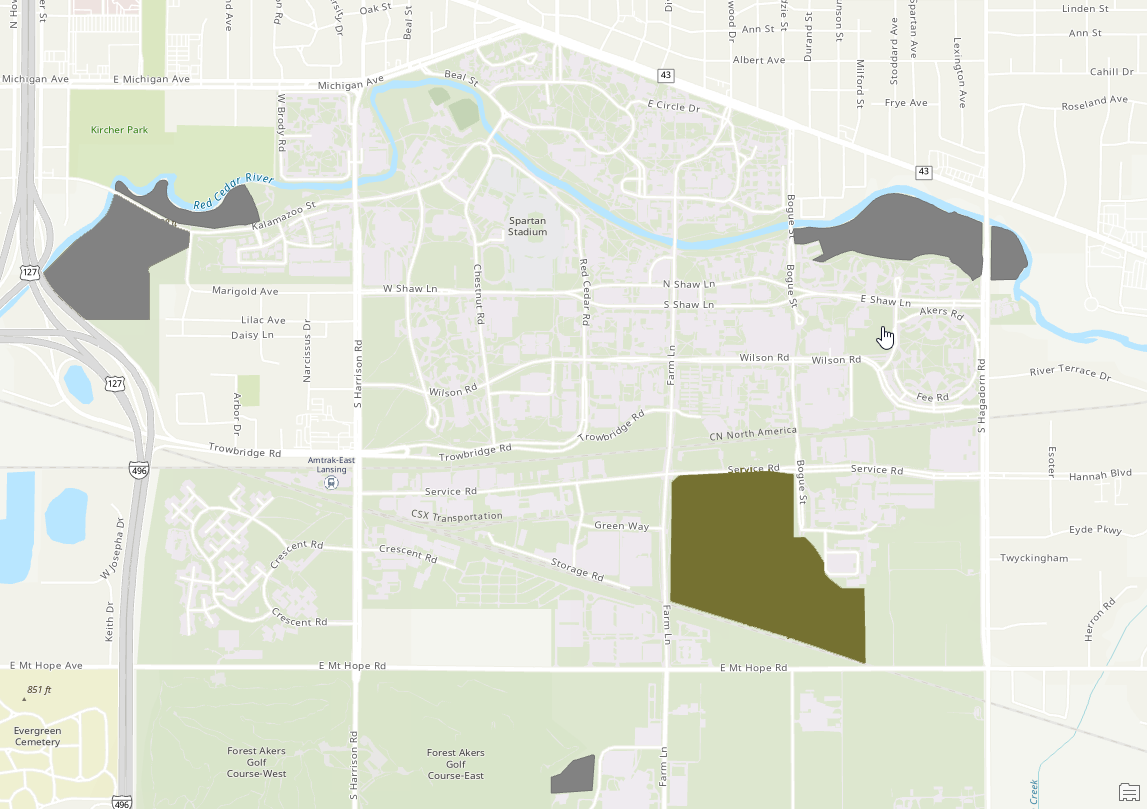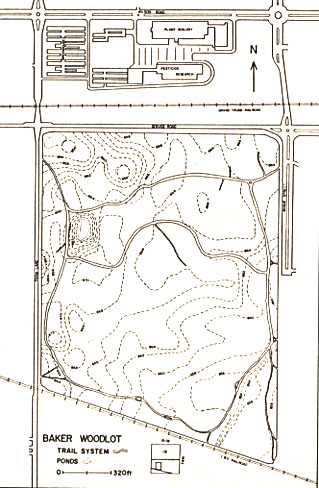
Baker Woodlot & Rachana Rajendra Neotropical Migrant Bird Sanctuary is a high quality, mesic forest covering 78 acres on MSU’s main campus.
Originally called South Woodlot, then Farm Lane Woodlot, it was eventually named Baker Woodlot in 1941 in honor of two early foresters at Michigan State, James Fred Baker and Harry Lee Baker. J. F. Baker was appointed Professor of Forestry and Chairman of the Forestry Department on 1 October 1907. Mr. H. L. Baker eventually became the first State Forester of Florida.
On 5 June 1999, a portion of the Baker Woodlot was designated as the Rachana Rajendra Neotropical Migrant Bird Sanctuary. Ms. Rajendra, a lover of birds and nature, was an MSU student. When a tragic automobile accident took her life in 1997, her family and friends established an endowment in her memory.
